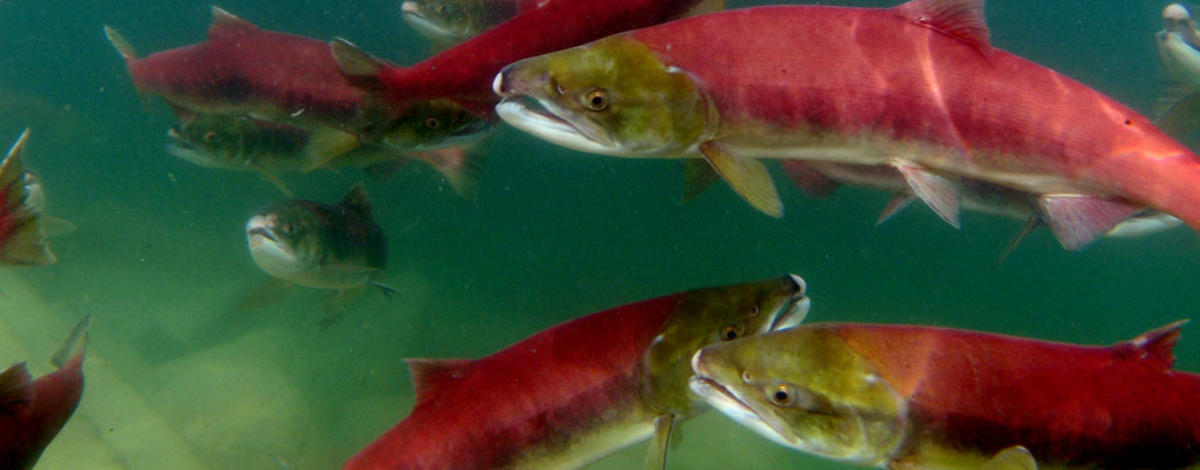Kept on biological life-support for more than two decades, Idaho’s iconic sockeye salmon are making a comeback.
In the 1880’s an estimated 25,000 and 35,000 sockeye would return annually to the Sawtooth Valley and Payette River Basin. Dam building starting as early as the 1900’s reduced their range and population. In 1992 only one – Lonesome Larry – made it back to Redfish Lake. Idaho’s sockeye salmon were listed as ‘endangered’ under the federal Endangered Species Act in November 1991 - the first Idaho salmon species to be listed.
A captive broodstock program was initiated in the 1990’s with 16 adult sockeye – 11 males and five females – taken into captivity from 1991 to 1998. Through advanced aquaculture techniques, the program has retained about 95 percent of the species' remaining genetic variability.
The broodstock program has since evolved into a hatchery program to produce sockeye for release into the wild. Millions of sockeye eggs and fish have been released into lakes and streams in the Sawtooth Valley. Hatchery sockeye that migrated to the ocean and successfully returned as adults, are once again spawning in Redfish Lake and producing naturally spawned offspring.
Sockeye travel the furthest of all Idaho salmon, swimming more than 900 miles and climbing more than 6,500 feet in elevation to their home waters in the Sawtooth Valley.
The landlocked version of the sockeye are one of Idaho’s most popular fisheries. Kokanee, or blueback, are found in many lakes and reservoirs. When they migrate to spawn along shorelines or up rivers, kokanee assume the characteristic red body color and green heads, much like sockeye. Like their sockeye cousins, kokanee also die after spawning.


